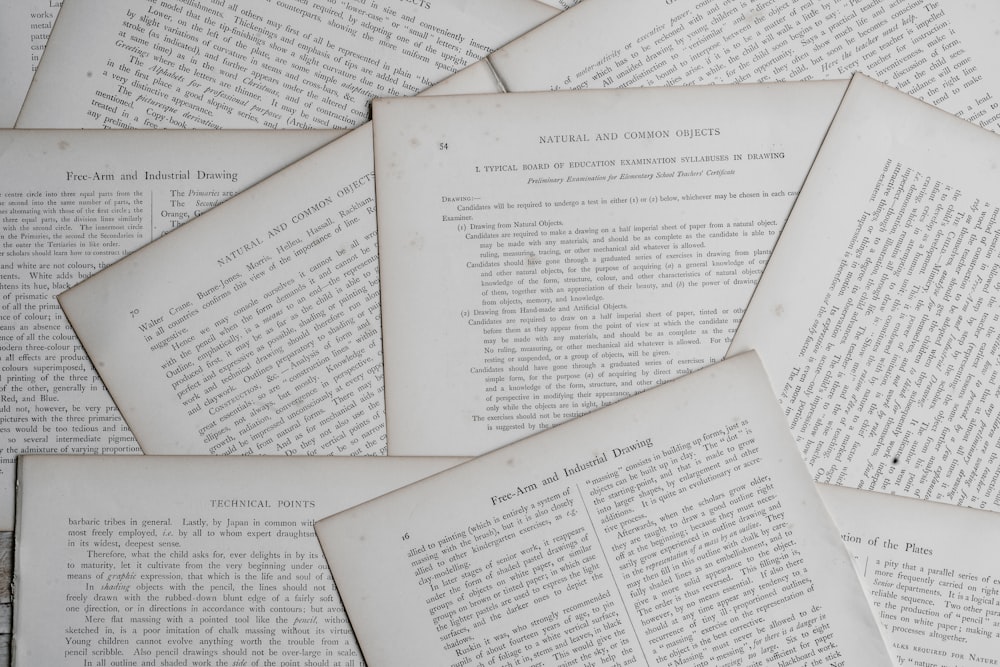Methods of writing a literature review for students
Published 7:24 pm Monday, January 23, 2023
Sponsored content
A literature review is an integral part of writing that serves as a focus and historical context for future discussions and opinions. The format varies from one academic field to another. But the concept is the same for dissertations, theses, and proposals. Generally, your literature review aims to analyze a segment of published theoretical articles and research studies using summary, classification, and comparison.
Source: Unsplash
A good literature review analyzes, synthesizes, and evaluates sources to give a clear picture of knowledge of the subject. If you don’t know how to write one or seek higher marks with less stress, you can review professional writing services that write literature review online for scholars in higher institutions. But since the text can come in any form, use these tips and practices to improve, organize, and write a literature review.
Define the topic
One of the mistakes scholars make is rushing their assignments. They write without clarifying the requirements. A student must always seek clarification from his instructor before starting his paper. For example, should you provide subheadings and background information? How many sources should it reflect? After clarifying the requirement, narrow your topic and limit the scope to aid targeted discussions.
Search relevant literature
After selecting the topic, you can search for new and relevant literature. As mentioned above, narrowing your topic will reduce the scope of your search. Therefore, comb through various literature and search relevant sources related to your questions and problems. While searching, list keywords, concepts, and variables related to your literature sources.
Ensure the sources are credible and note them as you begin the writing process. We recommend you use citations and references to avoid plagiarism. Likewise, organize your argument and structures to understand the relationships between the sources. Identify themes and debates that will improve your analysis.
Define your methodology
This technique is used to sort details in the text to discourage mixing ideas without a clear direction. It aids organization, magnifies creativity, and efficient understanding. Generally, the procedure follows the typical introduction-body-conclusion template.
The introduction
The introductory paragraph explains your topic and thesis statement. It forecasts key texts that will appear in your review. As a result, it is the most vital part of your text, as it determines its worthiness. We recommend you start your review with something catchy and interesting to capture and sustain your reader’s interest. Ensure your opening paragraph outlines conflicts in theory, trends, and evidence. It must include gaps in research, perspectives, and problems of immediate interest.
The body
The body contains discussions of means in thematic, methodological, or chronological format. It synthesizes and summarizes ideas to give an overview of the facts in each source and combines them into a concept. The body is where you state your ideas, opinions, criticism, interpretation, and reviews. As a result, you must analyze and research. Instead of paraphrasing, add your interpretations to give depth to the discussion. Not only this, but you must critically evaluate the strengths and weaknesses of your sources. We recommend you use well-structured paragraphs, topic sentences, and transition words. Draw comparisons, contrasts, and connections to make your text more attractive.
The conclusion
The conclusion summarizes findings from examined literature and emphasizes their significance. It connects to the primary research question to keep the flow and point established in the introduction. The best conclusion links the topic of discussion and a larger area of study. You must evaluate the current body of knowledge reviewed and point out inconsistencies in theory and research. Find major methodological flaws and vital areas relevant to future studies.
Source: Unsplash
Organize your text with structures
The body and sources are ways to organize your literature review. Depending on the length, you can combine or use some of these structures individually. Below are some of the popular methods of developing a literature review:
Chronologically
One of the simplest ways to format your text is to trace the development over time. As simple as it seems, one of the mistakes researchers make is simply listing and summarizing sources. Instead, analyze turning points, patterns, and key debates. Research other factors that have shaped the discussion. Then give your interpretation.
Thematically
If you discover a recurring central theme in your piece, organize your article into subsections to address different parts of the topic. Organize your article into subsections to address different parts of the topic. Chronological formatting follows the progression of time. But thematic structure focuses on development and progression. It follows a shift through periods within each section to draw an inference. In each paragraph, focus on specific issues and study them from different angles. If you are reviewing dysfunctions in people health outcomes, you can examine them under various themes. Consider the problem regarding understanding between the migrant and the health care staff. Take into account the differences in cultural aspects of the inhabitants of different countries and legal regulations. All this will help to study the topic in depth.
Methodologically
This format allows you to draw sources from various fields and compare the results and conclusions. It can be quantitative against qualitative research or theoretical versus empirical scholarship. A methodical format often influences the types of documents reviewed.
Theoretically
You can use your text to discuss theoretical frameworks, models, and key concept definitions. This type of format is more common with social sciences papers. The writer can argue the relevance of a theoretical approach or combine two or more concepts to create a framework. Either way, the literature is the foundation for your theoretical framework.
Conclusion
Literature reviews are designed to evaluate a topic’s writings so you can establish your position on that subject. However, requirements like length, presentation, and sources differ. As a result, we recommend you consult your instructor about expectations and match it with your judgment.




